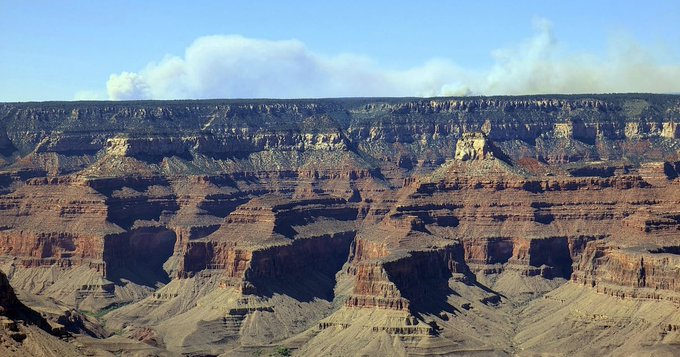Introduction
In July 2025, Arizona faced a severe wildfire emergency as large blazes erupted near the iconic Grand Canyon, prompting urgent evacuations and raising alarms about the growing threat of extreme weather conditions. These wildfires, fueled by a dangerous combination of high temperatures, gusty winds, low humidity, and parched vegetation, have not only threatened natural landscapes and wildlife but also put local communities and visitors at significant risk.
The Outbreak and Spread of the Wildfires
The most significant fire, known as the White Sage Fire, ignited on July 9, 2025, following a thunderstorm that brought lightning but little rain. The fire began on Bureau of Land Management lands approximately 15 miles southeast of Fredonia, Arizona, and quickly advanced toward the Jacob Lake area, a critical gateway to the Grand Canyon’s North Rim. By the evening of July 10, the fire had grown to an estimated 1,000 acres, with zero percent containment reported by authorities.
Key Factors Fueling the Fires
- Extreme Heat: Prolonged high temperatures created tinderbox conditions, drying out vegetation and making it highly flammable.
- Low Humidity: The lack of moisture in the air and soil further exacerbated the risk, allowing fires to spread rapidly.
- Gusty Winds: Strong winds not only fanned the flames but also carried embers over long distances, igniting new hotspots and complicating firefighting efforts.
- Dry Vegetation: Years of drought and insufficient rainfall had left forests and grasslands in a dangerously dry state, providing ample fuel for the fires.
Evacuations and Closures
As the White Sage Fire advanced, the Coconino County Sheriff’s Office issued a “GO” evacuation order for the Jacob Lake area, including all dispersed camping in the Kaibab National Forest and all visitors on the North Rim of the Grand Canyon. The National Park Service closed the North Rim to all visitors and staff until further notice, prioritizing public safety as the fire threatened to cross into the park’s boundaries.
State Route 89A: Closed in both directions near Fredonia, disrupting travel and access to the region.
Day Use Suspension: All recreational activities and day use at the North Rim were suspended, with authorities urging evacuees to follow emergency instructions and remain on paved roads.
Impact on Communities and the Environment
The wildfires have had a profound impact on both human and natural environments:
Displacement: Residents, tourists, and campers were forced to evacuate, leaving homes and belongings behind.
Wildlife at Risk: The fires threatened habitats of numerous plant and animal species unique to the Grand Canyon region.
Air Quality: Smoke from the fires reduced visibility and posed serious health risks, especially for vulnerable populations such as children, the elderly, and those with respiratory conditions.
Economic Costs: The closure of the North Rim during peak tourist season resulted in significant economic losses for local businesses and the tourism industry.
The Role of Extreme Weather and Climate Change
Experts have linked the intensity and frequency of wildfires in Arizona to broader patterns of extreme weather and climate change. Drought, record high temperatures, and unpredictable storms have created conditions ripe for wildfires not only in Arizona but across the American West. The 2025 fires are part of a disturbing trend, with the state experiencing an increasing number of billion-dollar weather disasters in recent years.
Emergency Response and Public Safety
Firefighters and emergency personnel have worked tirelessly to contain the blazes, protect lives, and minimize property damage. Their efforts have been challenged by the unpredictable behavior of the fires and the harsh environmental conditions. Authorities have stressed the importance of preparedness, urging residents to stay informed, heed evacuation orders, and take precautions against wildfire smoke exposure.
Conclusion
The wildfires near the Grand Canyon in July 2025 serve as a stark reminder of the escalating risks posed by extreme weather and climate change. As Arizona battles these destructive fires, the need for robust emergency response, community resilience, and proactive climate adaptation has never been more urgent. The event underscores the interconnectedness of environmental health, public safety, and economic stability in the face of natural disasters.

